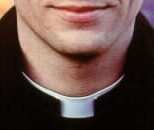What happens when a pope dies: "The pope is dead" (part 1)
[The following series outlines the main events and ceremonies following the announcement of a pope's death. I have used as reference James-Charles Noonan, Jr.'s "The Church Visible: The Ceremonial Life and Protocol of the Roman Catholic Church" among others.]
When the words "The pope is dead" is solemnly proclaimed within the walls of the Vatican, a series of events are put into motion. As one observer wrote 70 years ago, "Other men die in darkness, in confusion, and amid tears; the Pope, alone in the world, dies in ceremony." Indeed, a host of ceremonials, unlike any seen in the royal houses of Europe, accompany the announcement of the death of the Supreme Pontiff.
Prior to death, the entire papal court gathers for the death-watch. Next to the room where the pope is dying, high dignitaries of the papal household are gathered to form a guard of honor. The resident cardinals of Rome and the cardinal-grand penitentiary aid the dying pope. Around the world, cardinals begin to make their way to Rome.
After the pope draws his last breath, a doctor is summoned. But to be certain, the Church has its own way of determining that the pope is indeed dead. The cardinal camerlengo (chamberlain)--in this case Eduardo Martinez Cardinal Somalo of Spain--a man whom the pope had nominated prior to his death--approaches the pope. He removes from a red leather bag a small silver mallet engraved with the seal of the pope. Thrice the cardinal chamberlain gently taps with the mallet the forehead of the pope, calling in the pope's native tongue his baptismal name three times. This would have been the name his mother would have called him as a child. It is believed that no man can remain asleep at the sound of his baptismal or childhood name.
With no reply, the cardinal chamberlain announces to those gathered around the death-bed, "The pope is dead." With this announcement, the silence over the papal death-watch is broken as arrangements commence for the burial and for the conclave.
[Stay tuned for part 2: The Particular and the General Congregations]
When the words "The pope is dead" is solemnly proclaimed within the walls of the Vatican, a series of events are put into motion. As one observer wrote 70 years ago, "Other men die in darkness, in confusion, and amid tears; the Pope, alone in the world, dies in ceremony." Indeed, a host of ceremonials, unlike any seen in the royal houses of Europe, accompany the announcement of the death of the Supreme Pontiff.
Prior to death, the entire papal court gathers for the death-watch. Next to the room where the pope is dying, high dignitaries of the papal household are gathered to form a guard of honor. The resident cardinals of Rome and the cardinal-grand penitentiary aid the dying pope. Around the world, cardinals begin to make their way to Rome.
After the pope draws his last breath, a doctor is summoned. But to be certain, the Church has its own way of determining that the pope is indeed dead. The cardinal camerlengo (chamberlain)--in this case Eduardo Martinez Cardinal Somalo of Spain--a man whom the pope had nominated prior to his death--approaches the pope. He removes from a red leather bag a small silver mallet engraved with the seal of the pope. Thrice the cardinal chamberlain gently taps with the mallet the forehead of the pope, calling in the pope's native tongue his baptismal name three times. This would have been the name his mother would have called him as a child. It is believed that no man can remain asleep at the sound of his baptismal or childhood name.
With no reply, the cardinal chamberlain announces to those gathered around the death-bed, "The pope is dead." With this announcement, the silence over the papal death-watch is broken as arrangements commence for the burial and for the conclave.
[Stay tuned for part 2: The Particular and the General Congregations]




<< Home